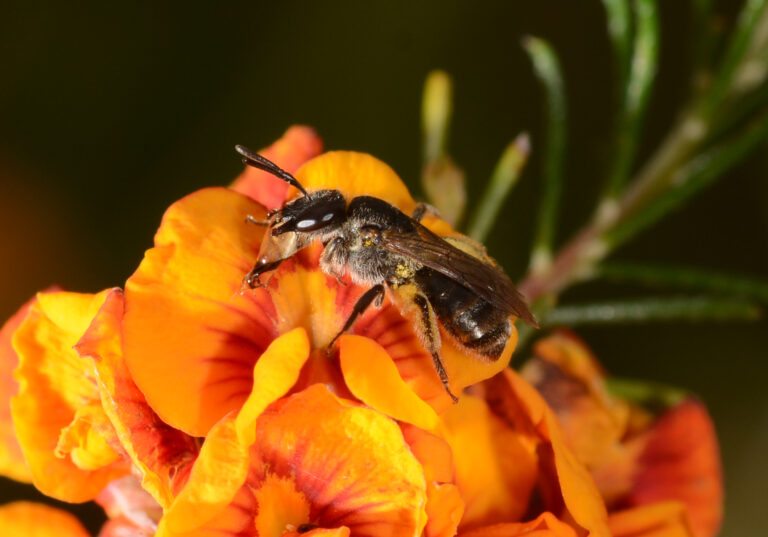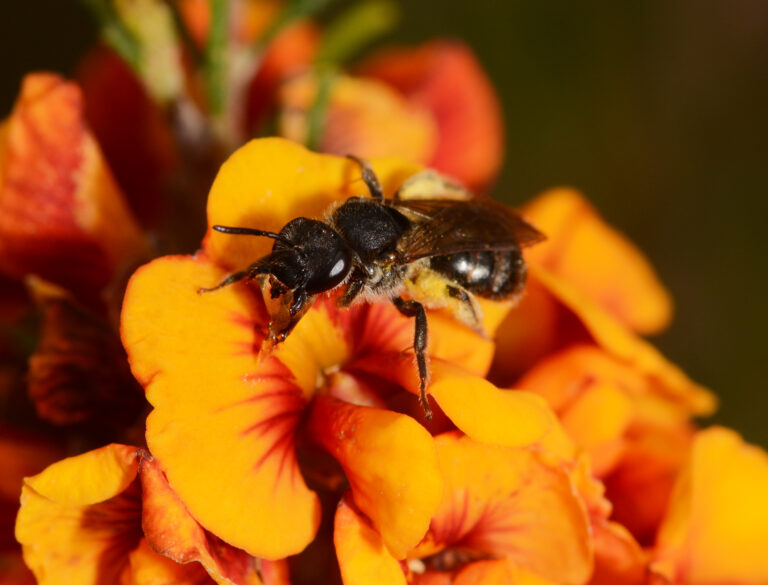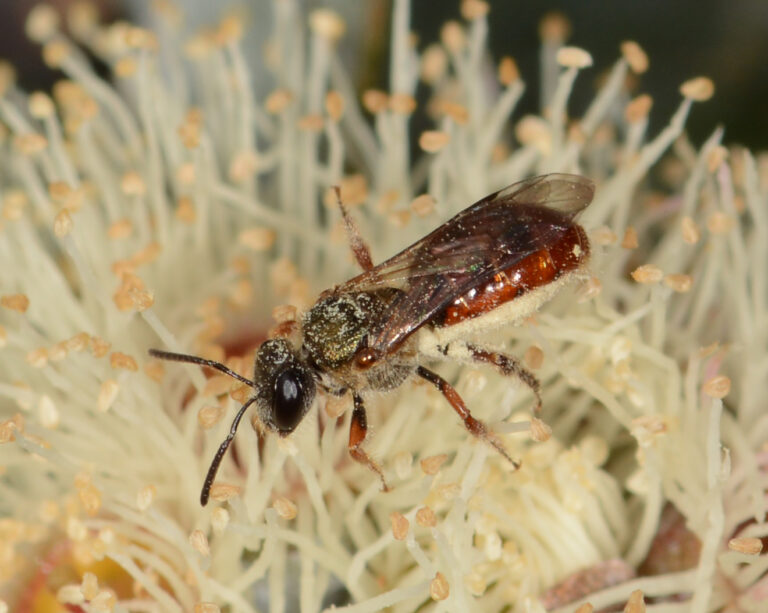While our native insect pollinators may be small, fast and hard to spot, if you have the time to sit quietly in the sunshine and watch a flowering plant, you might be amazed at what you see.


It re-swallows and then regurgitates again. Both the male and female of the species do this.
We have all had that peaceful moment, sitting in the sunshine listening to the happy hum of some insect or another flitting around the garden. But have you ever taken the time to wonder what those insects are, or thought about the role that they may be having in your garden and the local ecosystem???
In this wonderful video, UCLN President John Walter will show you how to do just that.
As an incredible photographer, specialising in macro-photography, and with a keen need to identify the beauty that he sees in the natural world, John will share his tips and tricks for:
- choosing the right weather conditions and the best time of day for locating wild pollinators
- observing these small pollinators without frightening them away
- photographing what you have seen (not everyone will have a camera as professional as John’s, but you will be surprised what you can capture on your mobile phone!)
- recording and uploading your sighting to an online information sharing network such as iNaturalist or the Wild Pollinator Count.
So the next time you find yourself with some time to spare on a day that is sunny, warm and calm, find a flowering plant or tree in your area and choose a single large flower, or a group of smaller flowers and sit there quietly for ten minutes and just watch! Keep a close eye on any insect that visits the flowers and moves around on the pistil or stamens (reproductive parts).
If you would like some help with identifying the insects you see, visit the Resources and Identification Tips pages on the Wild Pollinator Count Resources Page for some handy printables. Most importantly, remember that everyone starts somewhere, if you are not sure what type of pollinator you have seen, it is just as valid to note that when you submit your observation.
A brief guide to the bees you might be lucky enough to spot flitting around the Upper Campaspe Catchment (More insect species to follow in the next article!).
Reed Bees – may utilise a reed based bee hotel
Exoneura and Braunsapis – Over 80 Australian species
Reed Bees are slender black bees less than eight millimetres long. Some species have a red abdomen. They nest inside dry pithy twigs. As their habitat shrinks you will likely find them in plants such as raspberries and blackberries or in the dead fronds of tree ferns. Many nests can also be found in dead canes of the weed Lantana.
Blue Banded Bees – may utilise a clay bee hotel
Amegilla – 15 Australian species
These bees (between eight to 13 millimetres long), have beautiful stripes of blue or whitish hair across their black abdomens, are often seen darting around highly scented flowers. In the wild, females build a nest in shallow burrows in the ground. Each female builds her own nest burrow but many bees often nest together in the one place.
Teddy Bear Bees – may utilise a clay bee hotel
Amegilla (Asaropoda) – About 25 Australian species
As one of our bigger native bees, most species of these round furry brown bees are seven to 15 millimetres long. They build shallow nest burrows in soft soil and sometimes nest underneath houses. Each female builds her own nest burrow but many bees may nest together in the one location.
Leafcutter Bees – benefit from leaf litter being left where it falls
Megachile – About 40 Australian species
It is common to discover these amazing six to 15 millimetre long bees when rows of neat circular cuts on the edges of some leaves in the garden become noticeable. While your first thought may be that it is the work of caterpillars, it is just as likely to be Leafcutter bees using the cut out disks of the leaf as a nest building material.
Resin Bees – may utilise a wood and reed bee hotel where they can seal the end of the hole
Megachile, formerly in genus Chalicodoma – About 100 Australian species
Resin Bees are the most diverse of our native bees, existing in many colours and sizes. They can range from large, black 14 millimetre bees with white tufts of hair, to small, eight millimetre black bees with bright orange abdomens. They nest in pre-existing holes or gaps in timber or stonework. They collect resins and gums to build partitions between their brood cells and to seal their nest holes.
Homalictus Bees – may utilise a complex clay based bee hotel
Homalictus – Over 40 Australian species
Although very small (most less than eight millimetres long), the shiny Homalictus Bees come in a dazzling array of colours – golden blue, coppery red and green tinged with purple, red or gold are just a few of the colours listed by scientists. Homalictus Bees dig intricate branching nests in the ground. Many females may live together in each nest, taking turns to guard the narrow nest entrance. One nest was found to be occupied by over 160 females!

Masked Bees – may utilise a wood and reed bee hotel where they can seal the end of the hole
Amphylaeus, Hylaeus and Meroglossa – Over 150 Australian species
These slender black bees (most less than 10 millimetres long) are called ‘Masked Bees’ because they have pale markings on their faces. Many species also have a distinctive yellow spot on the thorax. Masked Bees have very little hair and carry pollen to their nests by swallowing it. The nests are usually in pithy stems or pre-existing holes in wood. Masked Bees weave their brood cells from an amazing cellophane-like secretion.
Please keep checking back in to watch John on his incredible journey while he attempts to photograph and record ALL the pollinator species in the Upper Campapse Catchment!
